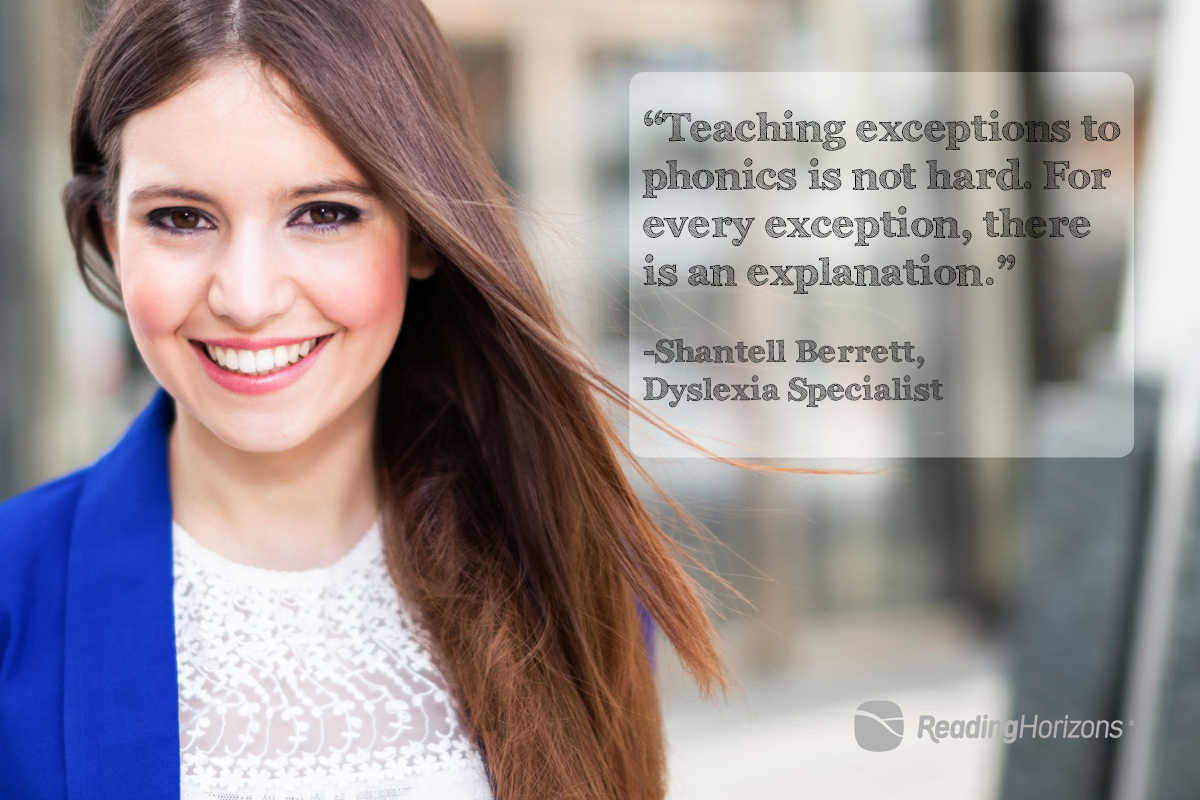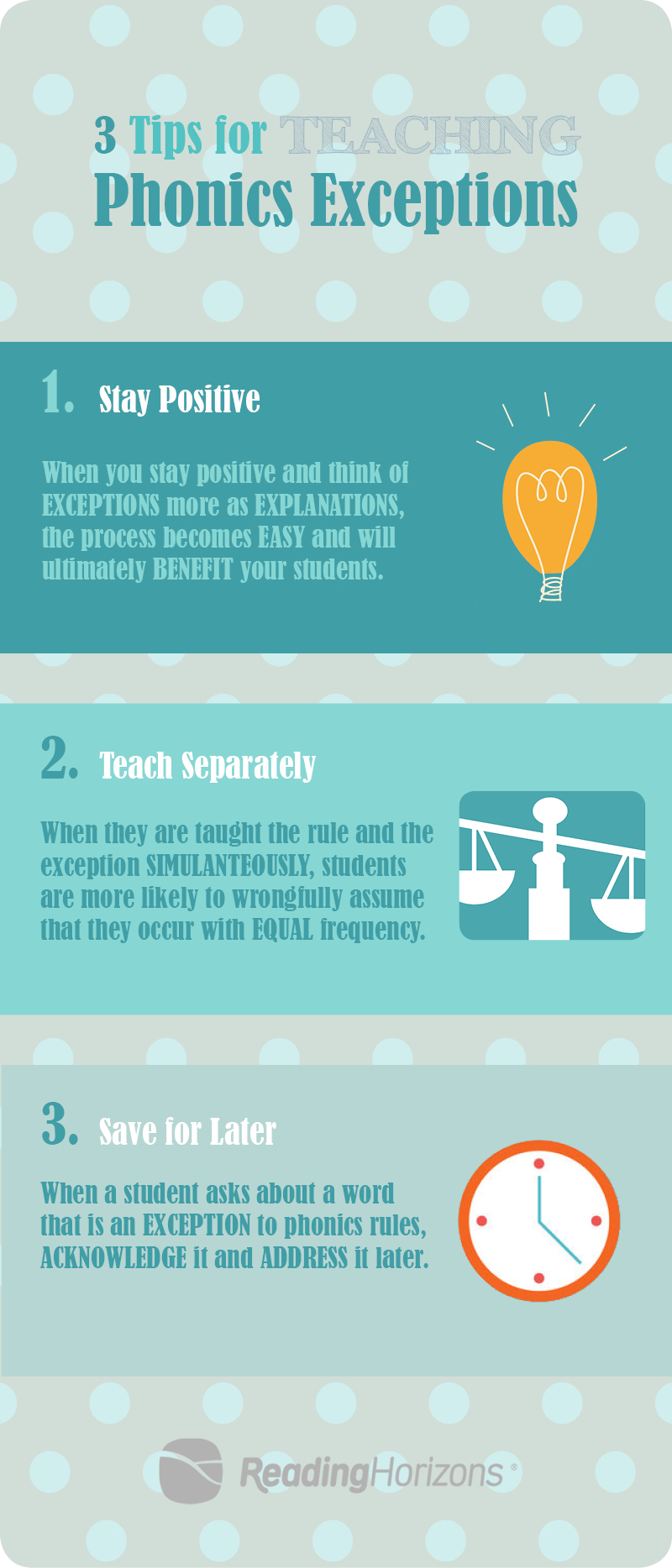3 Tips for Teaching Phonics Exceptions
***This content is based on an interview with Reading Horizons Director of Training and Dyslexia Specialist, Shantell Berrett.***

Many teachers successfully teach the rules of phonics but struggle when it comes to teaching the exceptions to those rules. They are afraid that in teaching the exceptions they’ll end up confusing their students and as a result, undo all of their hard work. But with the right attitude and expertise teaching the exceptions can be simple and effective for you and your students.
Here are three tips from Reading Horizons Director of Training, Shantell Berrett, which can help you teach the exceptions during structured literacy:
1. Frame the exceptions in a positive light.
The word exception often has a negative connotation. As teachers, we worry that teaching exceptions to phonics rules will only confuse our students. However, when we think of exceptions more as explanations (as to why a word cannot be decoded using a phonetic skill), then the process becomes less intimidating. All in all, exceptions only make up a small percentage of the English Language and most are only one sound off from the rule. When you have a positive attitude, teaching the exceptions is easy to do and will ultimately benefit your students.
2. Avoid teaching the rules and the exceptions simultaneously.
When students are taught the rules and the exceptions at the same time, they often assume that they occur with equal frequency (when the exceptions only occur about 16% of the time). When they are taught the rule and the exception simultaneously, students are more likely to be confused. They will analyze each word individually, wondering if it is following the pattern or if it is an exception.
3. Acknowledge the exception, and save it for later.
When a student asks about a word that is an exception phonics
Pinterest Reference Guide:

Effectively teaching phonics exceptions may